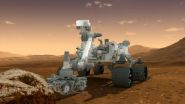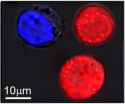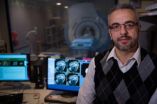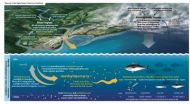(Press-News.org) For decades, a source of powerful earthquakes and volcanic activity on the Pacific Rim was shrouded in secrecy, as the Soviet government kept outsiders away from what is now referred to as the Russian Far East.
But research in the last 20 years has shown that the Kamchatka Peninsula and Kuril Islands are a seismic and volcanic hotbed, with a potential to trigger tsunamis that pose a risk to the rest of the Pacific Basin.
A magnitude 9 earthquake in that region in 1952 caused significant damage elsewhere on the Pacific Rim, and even less-powerful quakes have had effects throughout the Pacific Basin.
"There's not a large population in the Russian Far East, but it's obviously important to the people who live there. Thousands of people were killed in tsunamis because of the earthquake in 1952. And tsunamis don't stay home," said Jody Bourgeois, a University of Washington professor of Earth and space sciences.
Bourgeois will discuss the seismic and volcanic threats in the Kamchatka-Kurils region Monday (Dec. 3) during the fall meeting of the American Geophysical Union in San Francisco.
Earthquakes greater than magnitude 8 struck the central Kurils in 2006 and 2007, and both produced large local tsunamis, up to about 50 feet. Though the tsunamis that crossed the Pacific were much smaller, the one from the 2006 quake did more than $10 million in damage at Crescent City, Calif.
In 2009, Sarychev Peak in the Kurils erupted spectacularly, disrupting air traffic over the North Pacific.
Clearly, determining the frequency of such events is important to many people over a broad area, Bourgeois said.
"Let's say you decide to build a nuclear power plant in Crescent City. You have to consider local events, but you also have to consider non-local events, worst-case scenarios, which includes tsunamis coming across the Pacific," she said.
But that is only possible by understanding the nature of the hazards, and the historic record for earthquakes, tsunamis and volcanic eruptions in Kamchatka and the Kurils is relatively short. In addition, because the region was closed off from much of the world for decades, much of the information has started becoming available only recently.
Much has been learned in the last 10 years in the examination of tsunami deposits and other evidence of prehistoric events, Bourgeois said, but more field work in the Kamchatka-Kurils subduction zone is required to get a clearer picture.
"For hazard analysis, you should just assume that a subduction zone can produce a magnitude 9 earthquake," she said. So it is important to "pay attention to the prehistoric record" to know where, and how often, such major events occur.
Bourgeois noted that in the last 25 years research in the Cascadia subduction zone off the coast of Washington, Oregon, northern California and British Columbia has demonstrated that the historic record does not provide a good characterization of the hazard. It was once assumed the risks in the Northwest were small, but the research has shown that, before there were any written records, Cascadia produced at least one magnitude 9 earthquake and a tsunami that struck Japan.
Alaska's Aleutian Islands and the Komandorsky Islands, an extension of the Aleutians controlled by Russia, are another source of seismic and volcanic activity that need to be evaluated for their potential risk beyond what is known from the historical record.
"The Aleutians are under-studied," Bourgeois said. "The work in the Russian Far East is kind of a template for the Aleutians."
Ideally, a dedicated boat could ferry researchers to a number of islands in the Aleutian chain, similar to how Bourgeois and other scientists from the United States, Japan and Russia have carried out a detailed research project in the Kuril Islands in the last decade.
"The problem is that during the (research) field season, boats are commonly in demand for fishing," she said.
###For more information, contact Bourgeois at 206-685-2443 or jbourgeo@uw.edu.
Russian Far East holds seismic hazards that could threaten Pacific Basin
2012-12-04
ELSE PRESS RELEASES FROM THIS DATE:
Study spells out hat trick for making hockey safer
2012-12-04
TORONTO, Dec. 3, 2012—Mandatory rules such as restricting body checking can limit aggression and reduce injuries in ice hockey, making the game safer for young people, a new study has found.
Rule changes could be incorporated into existing programs that reward sportsmanship and combined with educational and other strategies to reduce hockey injuries, according to researchers at St. Michael's Hospital.
The need to address the issue is critical, said Dr. Michael Cusimano, a neurosurgeon. Brain injuries such as concussions frequently result from legal or illegal aggressive ...
Children with autism arrive at emergency room for psychiatric crisis 9 times more than peers
2012-12-04
BALTIMORE, Md. (December 3, 2012) – In the first study to compare mental health-related emergency department (ED) visits between children with and without autism spectrum disorders (ASD), researchers found that ED visits are nine times more likely to be for psychiatric reasons if a child has an ASD diagnosis. Published in the journal Pediatric Emergency Care (Epub ahead of print), the study found externalizing symptoms, such as severe behaviors tied to aggression, were the leading cause of ED visits among children with ASD. Importantly, the likelihood of a psychiatric ED ...
Curiosity shakes, bakes, and tastes Mars with SAM
2012-12-04
NASA's Curiosity rover analyzed its first solid sample of Mars in Nov. with a variety of instruments, including the Sample Analysis at Mars (SAM) instrument suite. Developed at NASA's Goddard Space Flight Center in Greenbelt, Md., SAM is a portable chemistry lab tucked inside the Curiosity rover. SAM examines the chemistry of samples it ingests, checking particularly for chemistry relevant to whether an environment can support or could have supported life.
The sample of Martian soil came from the patch of windblown material called "Rocknest," which had provided a sample ...
Alzheimer's researcher reveals a protein's dual destructiveness – and therapeutic potential
2012-12-04
A scientist at the University of British Columbia and Vancouver Coastal Health has identified the molecule that controls a scissor-like protein responsible for the production of plaques – the telltale sign of Alzheimer's disease (AD).
The molecule, known as GSK3-beta, activates a gene that creates a protein, called BACE1. When BACE1 cuts another protein, called APP, the resulting fragment – known as amyloid beta – forms tiny fibers that clump together into plaques in the brain, eventually killing neural cells.
Using an animal model, Dr. Weihong Song, Canada Research ...
Search for life suggests solar systems more habitable than ours
2012-12-04
SAN FRANCISCO—Scattered around the Milky Way are stars that resemble our own sun—but a new study is finding that any planets orbiting those stars may very well be hotter and more dynamic than Earth.
That's because the interiors of any terrestrial planets in these systems are likely warmer than Earth—up to 25 percent warmer, which would make them more geologically active and more likely to retain enough liquid water to support life, at least in its microbial form.
The preliminary finding comes from geologists and astronomers at Ohio State University who have teamed up ...
DNA analysis of microbes in a fracking site yields surprises
2012-12-04
SAN FRANCISCO—Researchers have made a genetic analysis of the microbes living deep inside a deposit of Marcellus Shale at a hydraulic fracturing, or "fracking," site, and uncovered some surprises.
They expected to find many tough microbes suited to extreme environments, such as those that derive from archaea, a domain of single-celled species sometimes found in high-salt environments, volcanoes, or hot springs. Instead, they found very few genetic biomarkers for archaea, and many more for species that derive from bacteria.
They also found that the populations of microbes ...
Multitasking plasmonic nanobubbles kill some cells, modify others
2012-12-04
HOUSTON – (Dec. 3, 2012) – Researchers at Rice University have found a way to kill some diseased cells and treat others in the same sample at the same time. The process activated by a pulse of laser light leaves neighboring healthy cells untouched.
The unique use for tunable plasmonic nanobubbles developed in the Rice lab of Dmitri Lapotko shows promise to replace several difficult processes now used to treat cancer patients, among others, with a fast, simple, multifunctional procedure.
The research is the focus of a paper published online this week by the American ...
Listen up, doc: Empathy raises patients' pain tolerance
2012-12-04
A doctor-patient relationship built on trust and empathy doesn't just put patients at ease – it actually changes the brain's response to stress and increases pain tolerance, according to new findings from a Michigan State University research team.
Medical researchers have shown in recent studies that doctors who listen carefully have happier patients with better health outcomes, but the underlying mechanism was unknown, said Issidoros Sarinopoulos, professor of radiology at MSU.
"This is the first study that has looked at the patient-centered relationship from a neurobiological ...
Women with sleep apnea have higher degree of brain damage than men, UCLA study shows
2012-12-04
Women suffering from sleep apnea have, on the whole, a higher degree of brain damage than men with the disorder, according to a first-of-its-kind study conducted by researchers at the UCLA School of Nursing. The findings are reported in the December issue of the peer-reviewed journal SLEEP.
Obstructive sleep apnea is a serious disorder that occurs when a person's breathing is repeatedly interrupted during sleep, sometimes hundreds of times. Each time, the oxygen level in the blood drops, eventually resulting in damage to many cells in the body. If left untreated, it ...
Mercury releases contaminate ocean fish: Dartmouth-led effort publishes major findings
2012-12-04
In new research published in a special issue of the journal Environmental Health Perspectives and in "Sources to Seafood: Mercury Pollution in the Marine Environment"— a companion report by the Dartmouth-led Coastal and Marine Mercury Ecosystem Research Collaborative (C-MERC), scientists report that mercury released into the air and then deposited into oceans contaminates seafood commonly eaten by people in the U.S. and globally.
Over the past century, mercury pollution in the surface ocean has more than doubled, as a result of past and present human activities such ...



